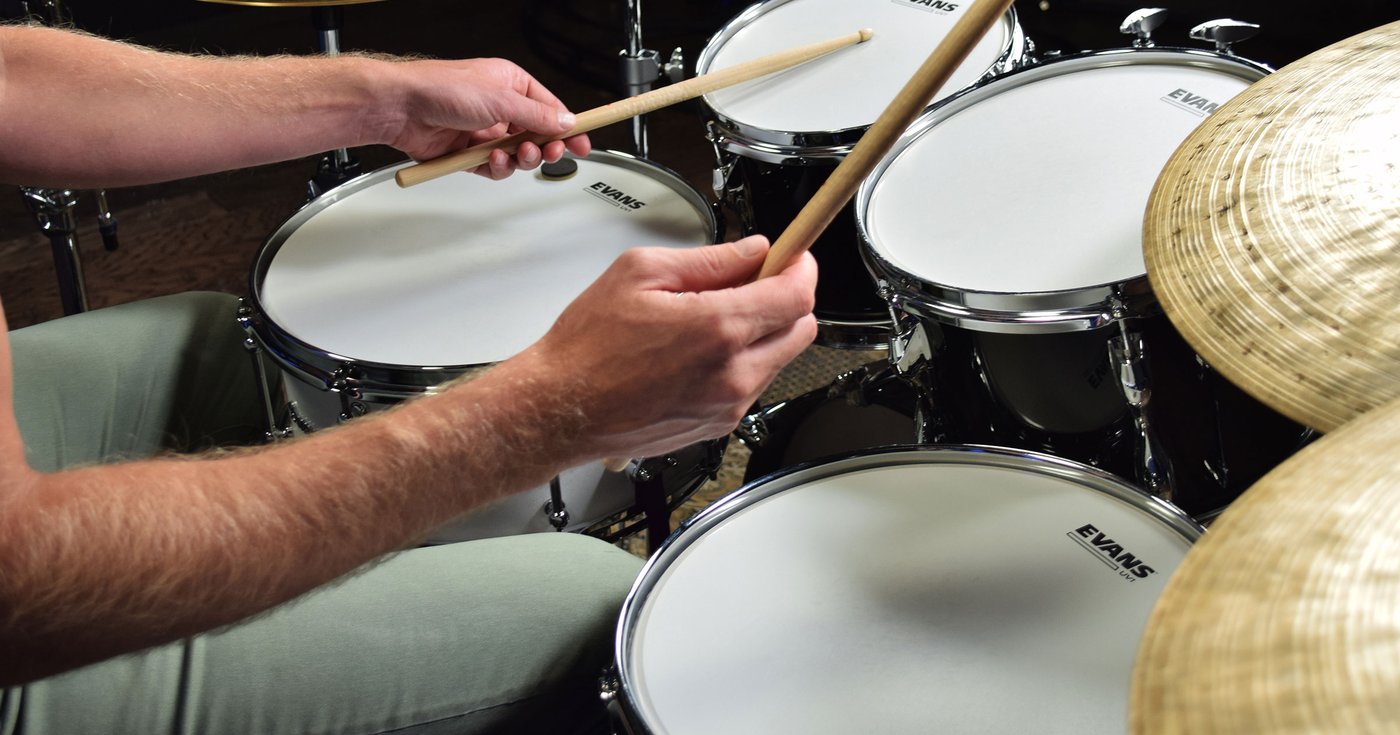
You walk into a music store. There it is: a huge rack of drumsticks overwhelming you with options. Hickory or maple? 5A or 2B? Nylon or wood tip?
Whether you’re new to drumming or a longtime player, there’s no rulebook for how to choose drumsticks. I’ve been playing for over 20 years, and even I struggle sometimes to find a pair that’s perfect for the gig.
While I’m sure it would be a fun challenge, it would take forever to test out every stick on the market. To save you some time here’s a quick guide – so the next time you set foot in a music store you can do so with confidence.
(If you’re on this page because you’re a brand spankin’ new drummer, we’ve got the perfect course for you – you’ll be playing your favorite songs within 90 days! Click here to check out New Drummers Start Here, where you can learn at your own pace for only $7 – less than your last Uber ride.)
You’re going to see pairs of sticks printed with different numbers. The most common ones are 2, 5, and 7.
The letter refers to the stick’s diameter. It might seem counterintuitive, but remember: the larger the number, the more delicate the stick.
Some brands offer non-standard sizes, like Vic Firth’s 55A (it’s in between a 5A and a 5B) or Regal Tip’s 8A. And while they aren’t as common, they’re absolutely worth trying.
Heavier, thicker sticks are perfect for genres with a solid backbeat like rock or R&B. Lighter sticks are great for ghost notes and dynamic genres like jazz and folk. But in the end, it’s all personal preference.
After the number, you’ll see a letter (which is typically A or B). These used to refer to the stick’s application (marching, orchestra, etc.). The letter tells you about the shape and the weight – so a Regal Tip 8A is going to feel lighter than a Vic Firth 5B.
While you might still find some diversity in the letters (like Promark’s 2S), most sizes are consistent between brands.
Most sticks are of a similar length. But you might find that longer ones give you more reach or a more comfortable grip. For example, Vic Firth makes an ‘Extreme’ line of sticks that are half an inch longer than standard sticks.
Yes, it does! The most common question I hear is “should I choose a nylon or wood tip?” Again, it all comes down to personal preference and the sound you want for your music. The tips make the most obvious difference when they hit cymbals, especially the ride.
Here’s a quick way to remember:
The shape of the tip can make a difference as well. If it has a small surface area (like the barrel or ball tip), the sound will be more defined. A larger surface area (like the oval tip) brings out a darker, fuller sound.
2B – High thickness, heavier weight
5A – Medium thickness, lighter weight
Extreme 5A – Medium thickness, lighter weight, extra length
5B – Medium thickness, heavier weight
7AN – Low thickness, lighter weight, nylon tip
7B – Low thickness, medium weight
Drumsticks come in a variety of materials, but the most common is hickory. You can also find heavy-duty sticks made from polyurethane. The weight, feel, and durability change based on the material:
Maple – Lightweight
Hickory – Medium weight, dense and durable
Oak – Heavyweight
Polyurethane – Extra durable
Once you find your perfect sticks, how do you know if the pair is a good match? You want both sticks to be as close as possible in shape and size, weight, and feel.
Roll each stick on a flat surface. If it wobbles, the stick might not be perfectly straight.
I also like to get a practice pad and lightly tap both sticks on the same surface, feeling the vibration and listening carefully to the sounds they’re making. If they’re way off pitch, it means one stick may be heavier than the other.
Choosing drumsticks is like finding that perfect pair of sneakers – what’s comfortable for you might not be comfortable for someone else. It’s worth taking the time to find the right fit. Good luck!
(P.S. If you’re a new drummer, check out this complete guide that includes everything a beginner needs to know about how to play drums. If you don’t feel like reading, this $7 video course will give you the structure and inspiration you need to start playing your favorite songs within 90 days!)
*This article contains affiliate links, which means we might earn a small commission from the product seller if you make a purchase. For more info, check out our privacy page.


By signing up you’ll also receive our ongoing free lessons and special offers. Don’t worry, we value your privacy and you can unsubscribe at any time.
We use cookies for traffic data and advertising. Cookie Policy »